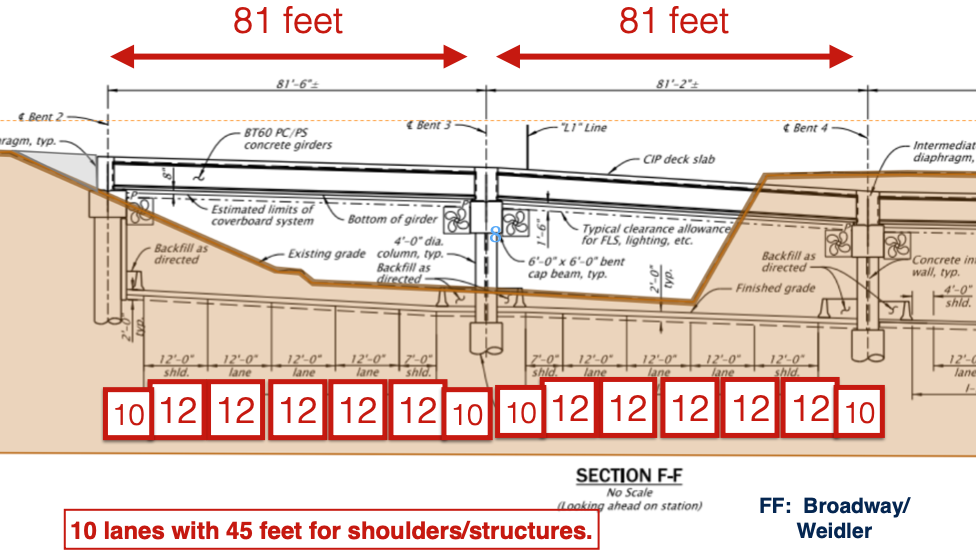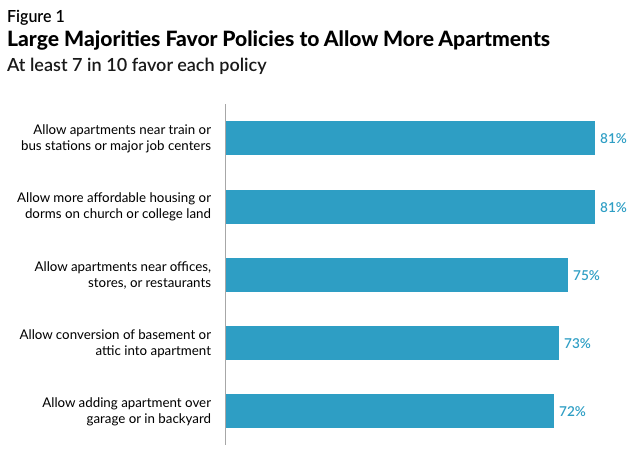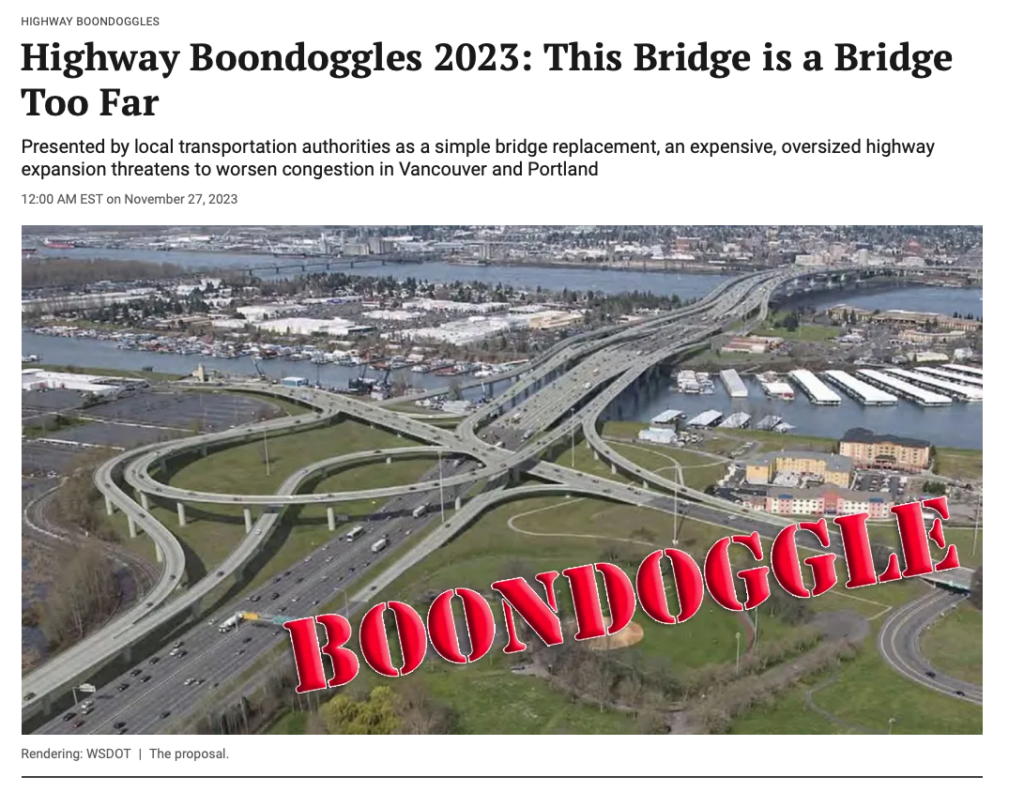What City Observatory did this week
Secret plans show ODOT is planning a 10-lane freeway in the Rose Quarter. City Observatory has obtained previously un-released plans showing that the $1.9 billion I-5 Rose Quarter project is being build with a 160-foot wide roadway, enough to accommodate a ten through traffic lanes, contradicting the Oregon Department of Transportation’s claim that their project merely adds “one auxiliary lane” in each direction. Each of the two 81-foot wide bays underneath Broadway and Weidler Streets are enough to accommodate five lanes of traffic, with over-sized shoulders.
The project is even wider as it passes under NE Hancock Street, where it would balloon to 250 feet wide. In reality, ODOT is proposing to double and even triple the existing 82-foot wide roadway. The excessively wide roadway, which has to be lowered in order to provide adequate clearance for massive cross-beams, is the real reason the project is so expensive. Far from reconnecting the community, ODOT’s plans vastly increase the width of the freeway scar through this historically Black neighborhood, and generate even more car traffic, making the area more dangerous and more polluted, and actually impairing redevelopment. In addition, the project’s Environmental Assessment fails to analyze the effects of this larger roadway, likely violating the National Environmental Policy Act.
Must Read
We’re all YIMBY’s now. There’s widespread and bi-partisan report for addressing America’s housing shortage by making it easier to build more apartments. A new poll from the Pew Charitable Trusts shows consistent and large majorities favor a battery of YIMBY (Yes in my back yard) policies, ranging from upzoning around transit stops and stations, adding accessory dwelling units, and allowing apartments near offices, stores and restaurants.
Strikingly the support crosses many of the nation’s demographic and ideological divides. As the Pew authors note:
Support for most of the housing policies transcended the usual fault lines of political party, region, race, income, and gender. The eight most popular proposals received clear majority support from Republicans, Democrats, and independents. In addition, 9 of the 10 tested measures received majority support from both renters and homeowners.
The Pew polling should provide additional impetus to the growing legislative efforts to make it easier to build more housing.
Seattle votes against taxing new homes to subsidize driving. One of the most insidious and invisible contributors to the housing shortage in US cities is the proliferation of “impact fees” that are imposed on new housing. Politically, its popular to pretend to foist the cost of infrastructure, especially transportation, onto “developers” by imposing hefty fees on new housing, especially apartments. But basic economics demonstrates that new fees don’t come out of developer profits, but instead simply drive up the cost of new housing, and also—and this is critical—reduce how much new housing gets built, which ultimately makes all housing more expensive. The Seattle City Council considered, and narrowly rejected a proposed transportation impact fee, persuaded by a study showing it would worsen the city’s housing problem by reducing construction 15 to 17 percent.
The defeat comes at a crucial time for housing affordability in the city. The amount of new development has fallen off sharply, with applications for new apartment permits falling about 75 percent since 2020. Burdening new housing construction with the costs of transportation, plus fees to subsidize affordable housing, discourages new investment; the effects may not be immediately apparent, but given the long lags in the construction cycle, it may be too late to correct these bad policies before the damage is done.
$7.5 billion Interstate Bridge Project named nation’s most expensive highway boondoggle. The misleadingly named Interstate Bridge Replacement project, really a 12-lane wide five mile long freeway expansion between Portland and Vancouver took top honors in the recently released Highway Boondoggles report prepared by the US Public Interest Research Group. Streetsblog featured detailed coverage of the project this past week.
The IBR project has been a consultant grift of major proportions. Public records obtained by City Observatory show that Oregon and Washington have already committed $192 million to consultants, including more than $20 million to public relations and communications consultants. That comes on top of $200 million spend a decade ago on the same project, then called the Columbia River Crossing.




